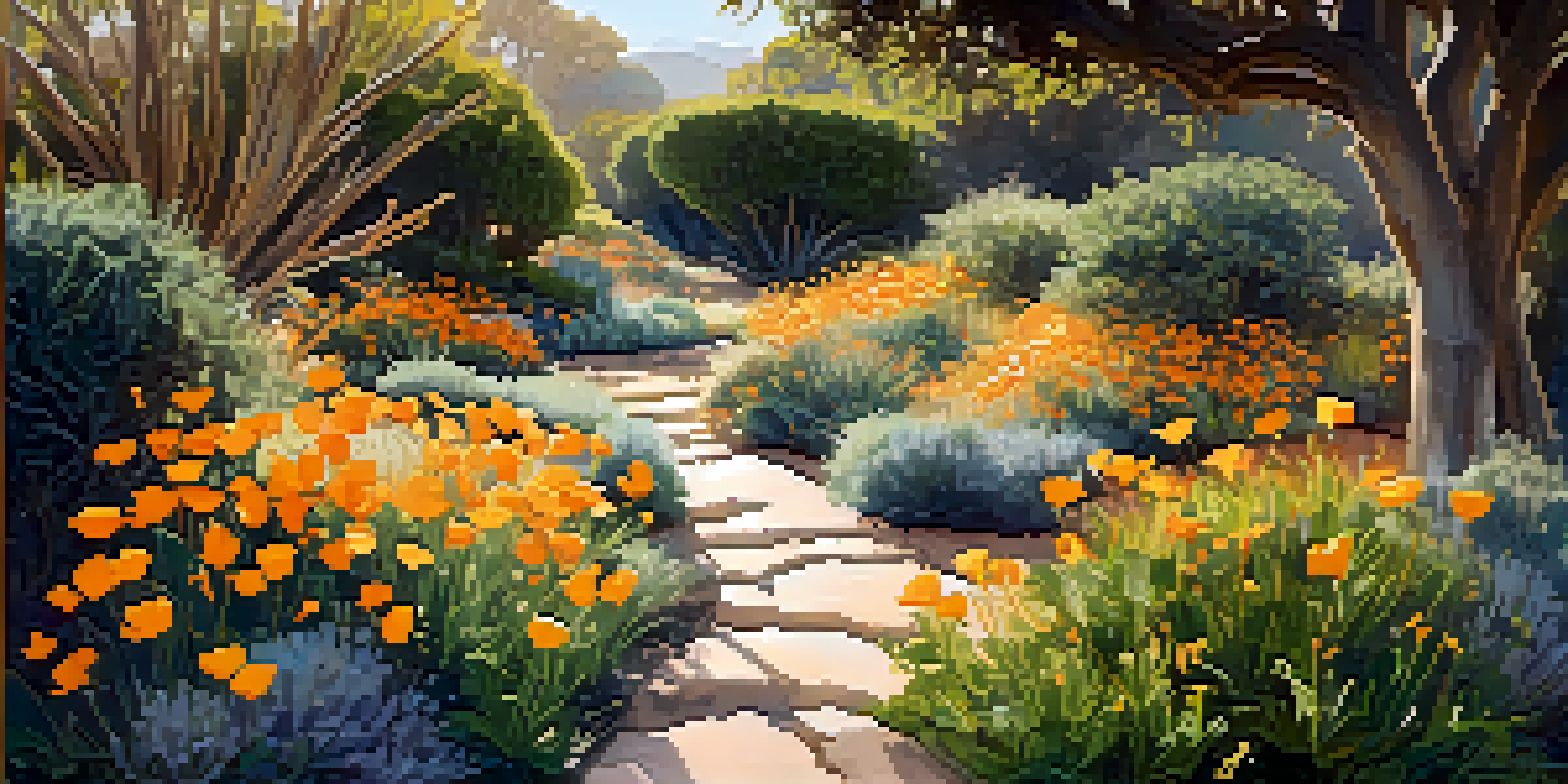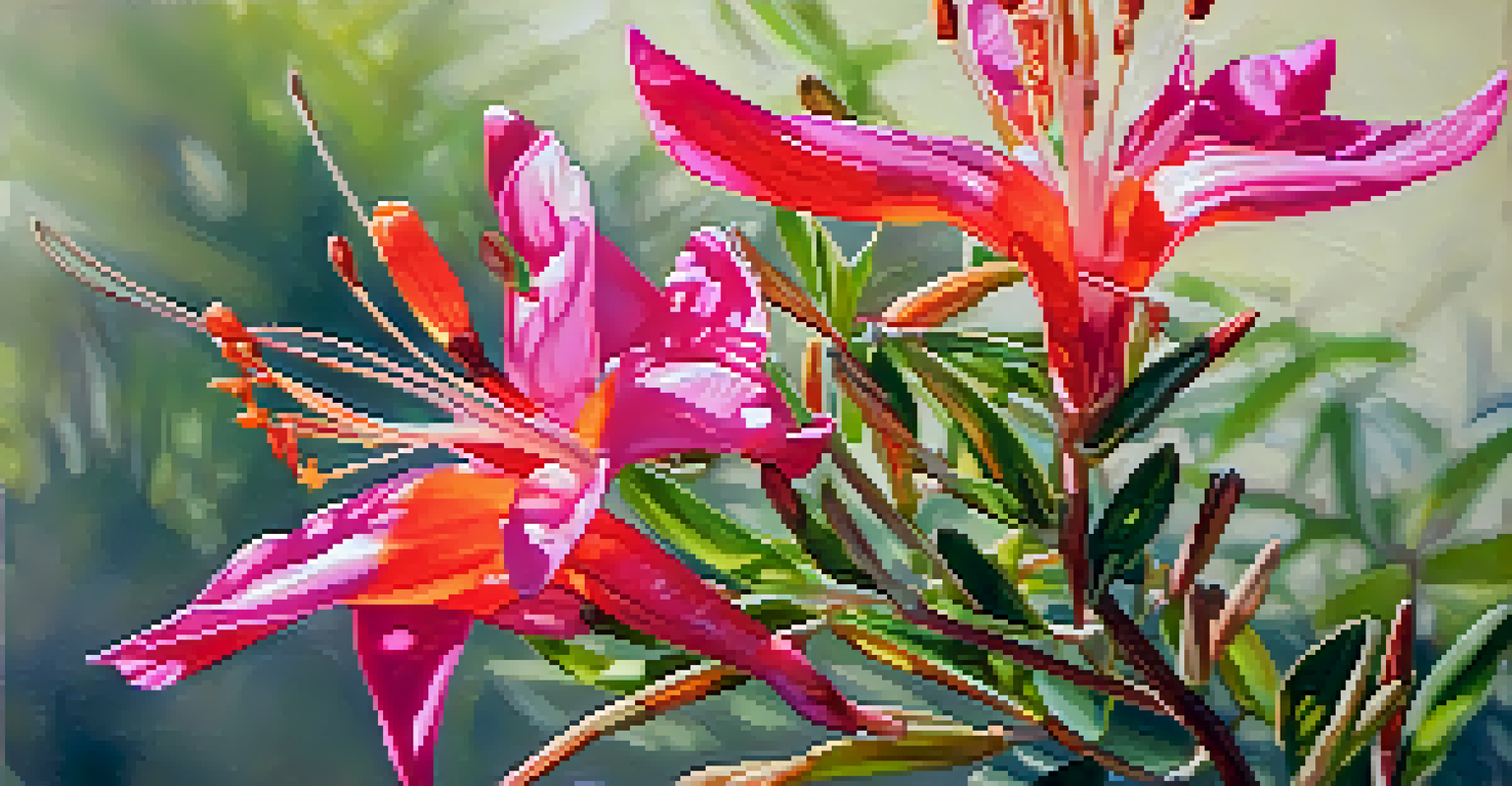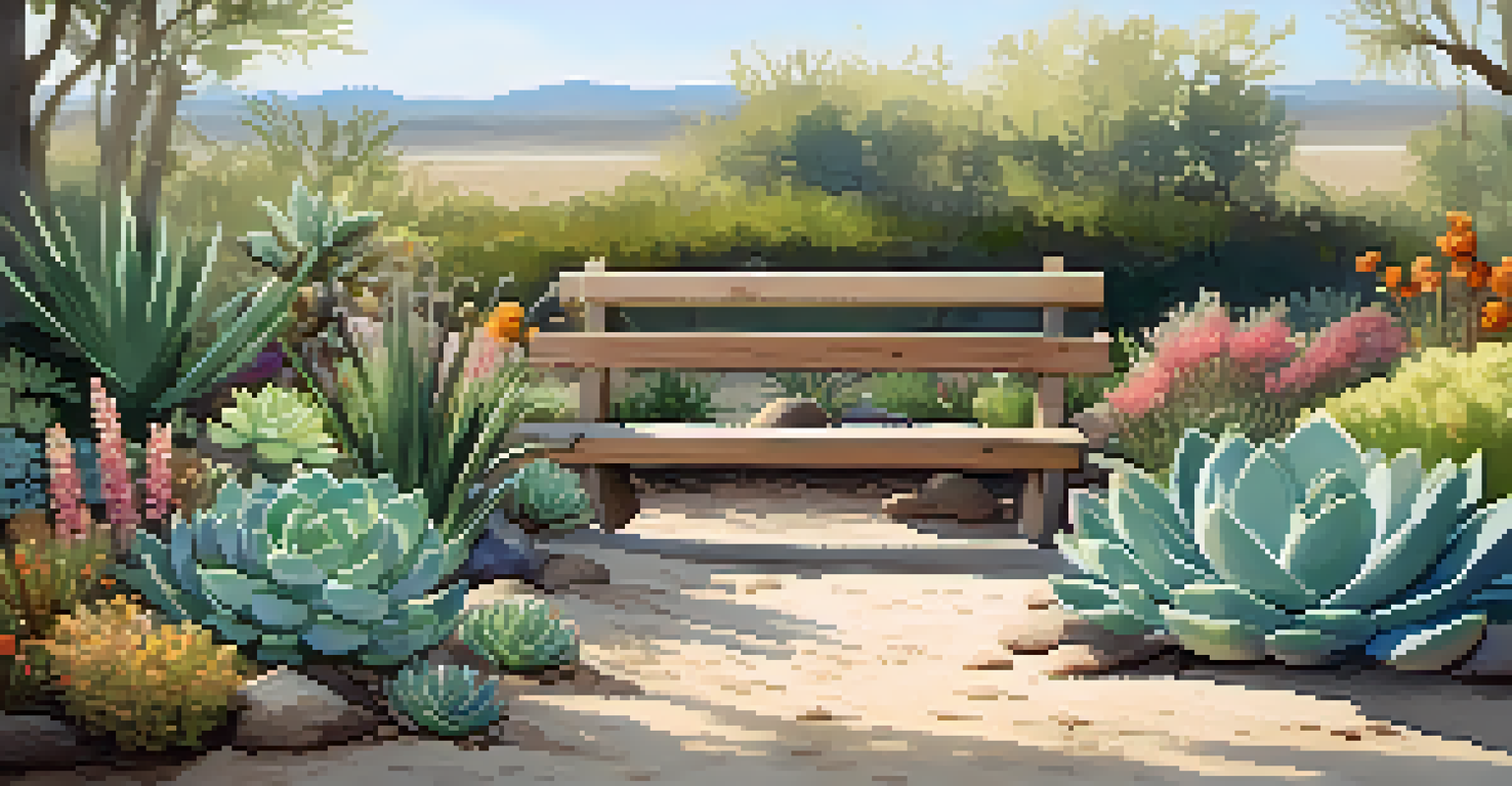How to Choose Native Plants for Santa Monica Landscapes

Understanding Santa Monica's Unique Climate and Soil
Santa Monica boasts a Mediterranean climate, characterized by warm, dry summers and mild, wet winters. This unique weather pattern influences which plants will thrive in your garden. Native plants have adapted to these conditions over thousands of years, making them a sustainable choice for local landscaping.
The greatest threat to our planet is the belief that someone else will save it.
The soil in Santa Monica can vary, often being sandy and well-draining. This means that when selecting plants, you should consider varieties that are drought-tolerant and can flourish in such soil types. By understanding the local environment, you can choose plants that will not only survive but thrive, reducing the need for excessive watering or fertilizers.
Additionally, considering the local wildlife is crucial. Native plants provide essential habitats for birds, butterflies, and other pollinators, supporting the ecosystem. When you choose native species, you contribute to a healthier local environment while enjoying a beautiful landscape.
Researching Native Plant Species Suitable for Your Area
Start by researching the native plants that are well-suited for Santa Monica. Resources like local nurseries or botanical gardens can provide valuable information on which species thrive in your specific location. You can also find lists of native plants online, often detailed by their blooming seasons and specific needs.

Consider creating a wishlist of plants that catch your eye, but ensure they are native to the region. Some popular choices include California poppies, coast live oaks, and California sagebrush. Each of these plants not only adds beauty but also plays a role in attracting local wildlife.
Embrace Santa Monica's Climate
Understanding the Mediterranean climate and soil conditions is crucial for selecting native plants that thrive in your garden.
It's also helpful to understand the growth habits of these plants. Some may spread quickly, while others take their time to establish roots. Knowing these traits helps you plan your garden layout more effectively, ensuring a balanced and harmonious design.
Assessing Your Landscape's Size and Conditions
Before planting, evaluate the size of your landscape and its specific conditions. Is it sunny or shady? Do you have areas that tend to retain water or dry out quickly? Assessing these factors helps you determine which native plants will fit best in each area of your garden.
Nature does not hurry, yet everything is accomplished.
For instance, if you have a sunny spot with well-drained soil, consider planting succulents or flowering perennials that thrive in direct sunlight. Conversely, shaded areas may benefit from ferns or shade-tolerant shrubs. Tailoring your plant choices to various microclimates within your landscape can lead to a more vibrant and thriving ecosystem.
Additionally, think about the overall aesthetic you want to achieve. Combining plants of different heights, colors, and textures can create a visually appealing landscape. By assessing your space carefully, you're setting the stage for a beautiful and functional garden.
Planning for Seasonal Interest in Your Garden
One of the joys of gardening is creating a space that offers visual interest throughout the seasons. When choosing native plants, consider not just their blooms but also their foliage, bark, and overall structure. Some native plants may have vibrant flowers in spring, while others provide stunning fall colors.
Incorporating a variety of native plants can ensure that there is something to admire year-round. For example, California lilac blooms in spring, while manzanita offers beautiful evergreen foliage and striking bark. This diversity keeps your garden lively and engaging, regardless of the season.
Choose Drought-Tolerant Plants
Selecting native plants with low water requirements helps conserve water while maintaining a vibrant landscape.
Moreover, seasonal interest also attracts different wildlife at various times of the year, enhancing your garden's role as a habitat. By planning for a garden that changes with the seasons, you're creating an inviting space for both humans and nature.
Choosing Plants with Low Water Requirements
Water conservation is essential in Santa Monica, especially during the dry summer months. Many native plants are adapted to thrive with minimal water once established. By choosing drought-tolerant species, you can maintain a beautiful garden while conserving this precious resource.
Examples of low-water native plants include the California fuchsia and the desert willow, both of which flourish with minimal irrigation. These plants not only save water but also require less maintenance overall, giving you more time to enjoy your garden rather than constantly tending to it.
Additionally, grouping plants with similar watering needs together can create a more efficient irrigation plan. This practice not only conserves water but also ensures that all your plants receive the appropriate care they need to thrive.
Understanding Maintenance Needs of Native Plants
While native plants are generally low-maintenance, it's important to understand their specific care requirements. Some may need occasional pruning or deadheading to encourage new growth or blooms. Familiarizing yourself with the maintenance needs of each species will help ensure your garden remains healthy and vibrant.
For example, certain native grasses may require periodic trimming to prevent overgrowth, while flowering plants might benefit from being cut back after blooming. Assessing these needs ahead of time allows you to plan your gardening schedule effectively and keep your landscape looking its best.
Plan for Seasonal Variety
Incorporating a range of native plants with diverse blooming and foliage characteristics ensures year-round visual interest in your garden.
Moreover, being mindful of maintenance can help you spot potential issues before they become problems. Regular checks for pests or signs of disease will keep your garden thriving and healthy, ensuring that the beauty of your native plants lasts for years to come.
Incorporating Native Plants into Your Landscape Design
Now that you've researched and selected suitable native plants, it’s time to think about how to incorporate them into your landscape design. Creating a cohesive look involves grouping plants in clusters or layering them to create depth. This not only enhances visual appeal but also mimics the natural ecosystems these plants originate from.
Consider using pathways or borders to define areas within your garden. This can help guide visitors through your space while highlighting the beauty of your native plants. Additionally, incorporating hardscapes like rocks or mulch can provide a contrast that makes your plants stand out even more.

Finally, don't forget to leave some space for spontaneity. Nature often surprises us, and allowing some areas to grow wild can create a dynamic and ever-changing landscape. By blending design with nature, you'll cultivate a stunning garden that reflects the beauty of Santa Monica.